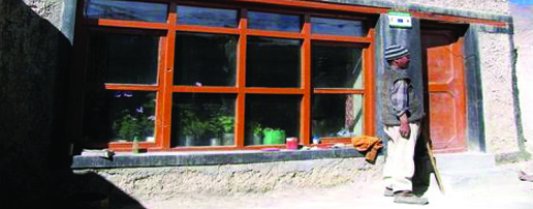Groupe Energies Renouvelables, Environnement et Solidarités (GERES) India runs a programme in the cold desert regions of the Western Himalayas to promote passive solar housing—buildings that stay warm using sunlight, insulation, and thermal mass, without the need for constant heating. This helps improve winter living conditions for rural communities where temperatures can fall below -20°C, fuel is scarce and expensive, and traditional homes are extremely cold and unhealthy.
The project has built over 550 houses and community buildings so far, trained 215 local masons and carpenters, and helped over 460 artisans improve their income through training in skills like handicrafts. By using local materials and simple solar design techniques (like solar walls and attached greenhouses), homes are now warmer (above 5°C indoors), fuel use has dropped by up to 60%, and families have more time and energy for work and education.
The approach follows three phases: demonstration (to raise awareness), extension (to expand reach), and exit (to ensure communities can continue without outside help). Local NGOs lead the work and are trained to manage and promote energy-efficient building practices independently.
The project cost is $2.6 million, with support from the EU, French institutions, private donors, and carbon credits. Households also contribute materials and labour.
Environmental benefits include lower greenhouse gas emissions and less reliance on firewood, while social impacts include better health, stronger community life, and more opportunities for women and children.
GERES has shared these methods in countries like Afghanistan, Nepal, and China. The key to success has been building trust with communities, keeping costs manageable, and using culturally appropriate designs. Passive solar housing is now seen as a proven, low-cost way to improve lives in cold, remote areas.








